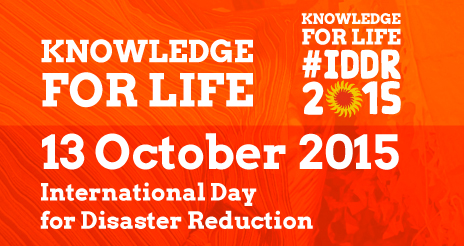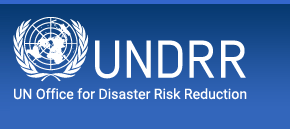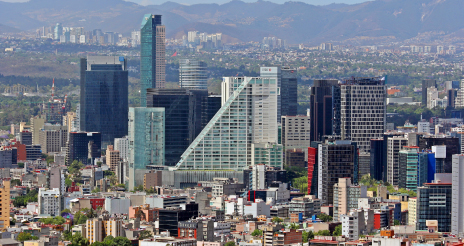- Our Mandate
- Mission and Objectives
- UNDRR in the UN
- Work Programme & Annual Reports
- Results Based System
- Work Partnerships
- Headquarters - Geneva
- SG-UN representatives for DRR
- Regional Office – The Americas and the Caribbean
- Head of the Regional Office – The Americas and the Caribbean
- What is Disaster Risk Reduction?
- What is the International Strategy?
- History of UNDRR
Mexico’s new seismic warning system
By Denis McClean
GENEVA, 18 September 2015 - The head of the UN Office for Disaster Risk Reduction (UNDRR), Margareta Wahlström, will take part tomorrow in the 30th anniversary commemoration of the earthquake which struck Mexico City on September 19, 1985.
This will include the activation of a new Seismic Warning System operated through 8,200 loudspeakers, to familiarize citizens with the sound of alerts. A national earthquake simulation will also be staged involving 80,000 public employees, 26 government agencies and the Federal Police.
The warnings will be generated by sensors along the Pacific coast which can provide residents with a 50-second alert to evacuate buildings
According to the Mexican National Centre for Prevention of Disasters, the earthquake which struck shortly after 7 a.m. on September 19, 1985, resulted in 4,541 casualties, destroyed 412 buildings, damaged 3,124 and caused over US$ four billion in economic damages. The EM-DAT database estimates that the earthquake took 9,500 lives and affected 2.1 million people. More than 40,000 people were injured and 80,000 left homeless.
Disaster risk governance was greatly improved with the creation in 1986 of the National Civil Protection System (SINAPROC) and in 2013 it was the subject of the first country review undertaken by the OECD High-Level Risk Forum.
The review found that “Although extreme events continue to disrupt economic activities, they now result in relatively few human casualties. This, in itself, is an impressive sign of Mexico’s progress, reflecting both technological advancements, such as sophisticated early warning systems and modern building codes, and wide sharing of a culture of safety.”
The review also found that “Mexico has also established itself as one of the leading countries in the financial management of disasters, through the Fund for Natural Disasters (FONDEN) and the Fund for the Prevention of Natural Disasters (FOPRODEN).”
Before leaving for Mexico where she will meet senior government officials, Ms. Wahlström said: “Mexico is making good progress towards reducing mortality from disasters in line with the Sendai Framework for Disaster Risk Reduction. It has strong civil protection legislation in place and has also built up a robust system for ensuring the safety of hospitals and schools.
“Mexico is investing in resilient infrastructure, ensuring compliance with building codes, succeeding in the strong communication of early warnings and spreading a culture of disaster risk reduction.”
Nonetheless, the OECD review found that “improper land use and territorial and urban planning contribute heavily to the vulnerability of Mexico’s population and economy to natural hazards.”
This finding is also reflected in UNDRR’s 2015 Global Assessment Report on Disaster Risk Reduction which cites floods and droughts in Mexico as making a significant contribution to lower human development and increased poverty. Between 2000 and 2005, the impact of disasters on human development was equal to a two-year loss of progress on average, and the effect on poverty was equivalent to an increase of 1.5 to 3.7 per cent.
Ricardo Mena, Head of the UNDRR Americas Regional Office, has been working closely with the Government of the Federal District of Mexico City to improve DRR policies and practice. Preventive actions have been complemented by preparedness initiatives that include training of 10,000 public servants and members of local citizen committees on family disaster preparedness plans.
He recalled that Mexico City was one of the first cities to sign up for UNDRR’s Making Cities Resilient Campaign which now has over 2,600 adherents worldwide. Since joining the campaign it has passed a law on structural safety which allows for unsafe property at high risk of damage from earthquakes to be expropriated and the occupants of such buildings provided with safe housing.
In 2011, the World Green Building Council awarded Mexico City the prestigious Local Climate Action Leadership Award for its Climate Action Plan (CAP). The city’s $1 billion package of environmental measures implemented over three years was designed to take seven million tons of carbon dioxide (CO2) out of the atmosphere of Mexico City which was once renowned as the most polluted mega-city on the face of the earth. Mexico City has a population of 9 million and an estimated 22 million people live in the entire metropolitan area.
GENEVA, 18 September 2015 - The head of the UN Office for Disaster Risk Reduction (UNDRR), Margareta Wahlström, will take part tomorrow in the 30th anniversary commemoration of the earthquake which struck Mexico City on September 19, 1985.
This will include the activation of a new Seismic Warning System operated through 8,200 loudspeakers, to familiarize citizens with the sound of alerts. A national earthquake simulation will also be staged involving 80,000 public employees, 26 government agencies and the Federal Police.
The warnings will be generated by sensors along the Pacific coast which can provide residents with a 50-second alert to evacuate buildings
According to the Mexican National Centre for Prevention of Disasters, the earthquake which struck shortly after 7 a.m. on September 19, 1985, resulted in 4,541 casualties, destroyed 412 buildings, damaged 3,124 and caused over US$ four billion in economic damages. The EM-DAT database estimates that the earthquake took 9,500 lives and affected 2.1 million people. More than 40,000 people were injured and 80,000 left homeless.
Disaster risk governance was greatly improved with the creation in 1986 of the National Civil Protection System (SINAPROC) and in 2013 it was the subject of the first country review undertaken by the OECD High-Level Risk Forum.
The review found that “Although extreme events continue to disrupt economic activities, they now result in relatively few human casualties. This, in itself, is an impressive sign of Mexico’s progress, reflecting both technological advancements, such as sophisticated early warning systems and modern building codes, and wide sharing of a culture of safety.”
The review also found that “Mexico has also established itself as one of the leading countries in the financial management of disasters, through the Fund for Natural Disasters (FONDEN) and the Fund for the Prevention of Natural Disasters (FOPRODEN).”
Before leaving for Mexico where she will meet senior government officials, Ms. Wahlström said: “Mexico is making good progress towards reducing mortality from disasters in line with the Sendai Framework for Disaster Risk Reduction. It has strong civil protection legislation in place and has also built up a robust system for ensuring the safety of hospitals and schools.
“Mexico is investing in resilient infrastructure, ensuring compliance with building codes, succeeding in the strong communication of early warnings and spreading a culture of disaster risk reduction.”
Nonetheless, the OECD review found that “improper land use and territorial and urban planning contribute heavily to the vulnerability of Mexico’s population and economy to natural hazards.”
This finding is also reflected in UNDRR’s 2015 Global Assessment Report on Disaster Risk Reduction which cites floods and droughts in Mexico as making a significant contribution to lower human development and increased poverty. Between 2000 and 2005, the impact of disasters on human development was equal to a two-year loss of progress on average, and the effect on poverty was equivalent to an increase of 1.5 to 3.7 per cent.
Ricardo Mena, Head of the UNDRR Americas Regional Office, has been working closely with the Government of the Federal District of Mexico City to improve DRR policies and practice. Preventive actions have been complemented by preparedness initiatives that include training of 10,000 public servants and members of local citizen committees on family disaster preparedness plans.
He recalled that Mexico City was one of the first cities to sign up for UNDRR’s Making Cities Resilient Campaign which now has over 2,600 adherents worldwide. Since joining the campaign it has passed a law on structural safety which allows for unsafe property at high risk of damage from earthquakes to be expropriated and the occupants of such buildings provided with safe housing.
In 2011, the World Green Building Council awarded Mexico City the prestigious Local Climate Action Leadership Award for its Climate Action Plan (CAP). The city’s $1 billion package of environmental measures implemented over three years was designed to take seven million tons of carbon dioxide (CO2) out of the atmosphere of Mexico City which was once renowned as the most polluted mega-city on the face of the earth. Mexico City has a population of 9 million and an estimated 22 million people live in the entire metropolitan area.
Follow the UNDRR news online:
 International Day for Disaster Reduction #DIRD 2015 Knowledge for Life
International Day for Disaster Reduction #DIRD 2015 Knowledge for Life
More information

 Mexico City marks the 30th anniversary of the 1985 earthquake with the launch of a new Seismic Warning System. (Photo:
Mexico City marks the 30th anniversary of the 1985 earthquake with the launch of a new Seismic Warning System. (Photo: